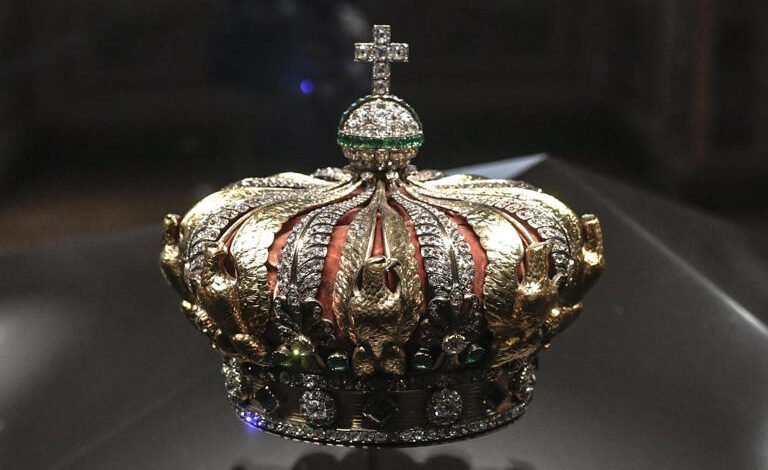
Louver Museum Heist Nets Priceless Jewels in 4-Minute Strike
Thieves armed with power tools shocked Paris by stealing eight priceless royal jewels from the Louver museum in just four minutes before fleeing on scooters. The world’s most visited museum had barely opened at 9:30 AM local time when the bold robbery took place, with the criminals vanishing by 9:38 AM. The thieves shattered display cases and grabbed historically precious treasures. Their haul included Empress Eugénie’s tiara and brooch, Empress Marie Louise’s emerald jewelry, and Queen Marie-Amelie and Queen Hortense’s sapphire pieces. Police later discovered a damaged crown, adorned with more than 1,300 diamonds, along the River Seine where the thieves escaped. French Interior Minister Laurent Nuñez emphasized the stolen items’ immense heritage value, calling them “priceless.” The authorities have deployed more than 60 investigators to solve this high-profile case.
How did the Louver heist unfold in just four minutes?
A skilled four-person team pulled off the Louver museum heist with remarkable precision. French police called them a professional “commando” who carried out their plan with military-like efficiency.
Timeline from 9:30 AM entry to 9:34 AM escape
The thieves struck at 9:30 AM local time, just half an hour after the museum opened its doors. They approached the building’s south side along the Seine River. Two crew members climbed to a second-floor balcony while their accomplices waited with getaway vehicles. By 9:34 AM, they had finished their mission. Interior Minister Laurent Nunez stated that the whole ordeal took just seven minutes from start to finish.
Use of monte-meubles and coordinated team roles
The robbers used a monte-meubles—a truck-mounted electric ladder common in Paris for moving furniture—as their main entry point. This choice made sense since such equipment doesn’t raise eyebrows on Parisian streets. Two masked thieves rode the lift to reach the Apollo Gallery and cut through window glass with battery-powered disk cutters. Their partners stayed below as lookouts and getaway drivers.
The group wore yellow and orange safety vests to look like construction workers and placed traffic cones around the area to appear legitimate. They threatened guards with their tools after getting inside and broke into two display cases. Museum staff stopped them from setting their vehicle on fire during their escape.
Visitor panic and emergency evacuation
Security teams started evacuation procedures the moment alarms rang through the building. Tour guide Ryan el Mandari heard “stomping” noises on the window while leading tourists through the Apollo Room. “I was just trying to figure out what’s happening when I saw museum staff going to that noise. Then they did a turn around, like real quick, and they started running and saying ‘get out, get out, get out, get out, evacuate!'”
Witnesses reported scenes of “total panic”, but the French interior ministry confirmed everyone left safely. Many guests “had no clue that it was a robbery” until they were outside.
What makes the stolen jewels culturally irreplaceable?
The Louver’s stolen treasures stand as an irreplaceable part of France’s national identity. Experts have called this heist “a national disaster” for France. These jewels surpass their material value by embodying centuries of royal heritage and craftsmanship.
Royal lineage of the items: Napoleon III, Empress Marie Louise
Each stolen piece tells a profound historical story. Napoleon Bonaparte gave an emerald necklace and earrings to his second wife, Marie-Louise of Austria, as a wedding gift in March 1810. This ornate set has 32 carefully cut emeralds and 1,138 diamonds. Empress Eugénie’s diamond-encrusted diadem sparkles with nearly 2,000 diamonds. Her reliquary brooch has the 17th and 18th Mazarin diamonds—precious stones Cardinal Mazarin gave to King Louis XIV in 1661. The last queen of France, Marie-Amelie’s sapphire set has a necklace that shines with eight sapphires and 631 diamonds.
Symbolic value vs. monetary worth
President Emmanuel Macron called the theft “an attack on a heritage that we cherish because it is our history”. These jewels mean much more than their gemstones—they embody France’s complex national identity. Interior Minister Laurent Nuñez stressed their “inestimable heritage value” over their monetary worth. The bow brooch marks a key diplomatic moment when Empress Eugénie wore it during Queen Victoria’s visit to Versailles in 1855. The thieves left behind the most valuable piece—the 140-carat Regent diamond worth AED 220.32 million. This suggests they wanted items they could move and take apart easily.
Expert insights on jewel disassembly and black market risks
Art recovery specialists worry these historical artifacts might be gone already. Christopher Marinello of Art Recovery International warned, “The thieves are not going to keep them intact. They are going to break them up, melt down the valuable metal, recut the valuable stones and hide evidence of their crime”. Dismantled jewels become impossible to trace but keep much of their value. The thieves might take these stones to major diamond centers like Antwerp, Israel, or India to recut them. Law enforcement faces tough odds—the FBI’s 2024 report shows that only 2.1% of stolen jewelry and precious metals were found in the United States.
What are French leaders and the public saying?
Image Source: Art News
The Louver museum heist sparked strong reactions from politicians all over France. Officials from different parties called the theft a national embarrassment.
Macron calls it ‘an attack on our history’
President Emmanuel Macron quickly responded to the robbery. He called it “an attack on a heritage that we cherish because it is our history”. The president promised to catch the thieves and get back the stolen treasures. This crisis happened shortly after Macron revealed a 10-year plan to save the Louver from its infrastructure issues and overcrowding. The timing of the security breach seemed ironic.
Justice Minister admits ‘we have failed’
Justice Minister Gérald Darmanin made a surprising confession. “What is certain is that we have failed, since people were able to park a furniture hoist in the middle of Paris, get people up it in several minutes to grab priceless jewels”. He admitted the theft gave France a “deplorable” image and said “The French people all feel like they’ve been robbed”. Interior Minister Laurent Nuñez ordered a full security review at every museum and cultural site in France.
Tourist and citizen reactions to museum closure
Tourists stood outside the closed museum with mixed feelings of disappointment and wonder. Two sisters from Ireland told reporters, “It feels like we’re a part of history, we just can’t even believe it. It’s amazing and shocking at the same time”. A Spanish couple, Rodrigo and Alicia, shared their frustration: “It is frustrating, we were really looking forward to visiting the Louver for the first time”. Local residents came to see the aftermath. Parisian Victor Sauvageot explained, “I’m passing by here just to immortalize this little moment, which is not very glorious for France”.
Can the Louver recover from this security breach?
Image Source: ABC27
The recent heist at the Louver revealed major security gaps in the museum’s protection systems. A state auditor’s report leaked details showing 75% of the Richelieu wing lacked video surveillance and a third of rooms in the Denon wing had no surveillance cameras.
New Renaissance project and planned renovations
President Macron unveiled a €700 million “Louver New Renaissance” project in early 2025 that will run through 2031. Culture Minister Rachida Dati verified this ten-year plan has security upgrades. “We are completely overhauling the digital and IT network, which was totally obsolete, with 450 kilometers of cables,” she explained. In spite of that, officials admitted these improvements “cannot be done in 24 hours”.
Calls for urgent security overhaul
The museum’s staff had already warned about security weaknesses. A security worker revealed to reporters that they had “reached the limit” of their capabilities after “drastic” staff reductions—the number dropped from 994 agents in 2014 to 856 in 2023. Interior Minister Laurent Nuñez promptly ordered security measure reviews at all French cultural institutions.
Lessons from global museum thefts and future prevention
Security expert Christopher Marinello cautioned, “If the Louver is going to be hit, every museum is vulnerable”. Museums with valuable collections should upgrade to “bank vault-like systems,” according to experts. Museums worldwide started reviewing their security programs after the heist.
This Louver Museum heist stands way beyond the reach and influence of a simple theft. The criminals executed their plan with remarkable precision and completed the job in just four minutes. Their sophisticated approach rarely shows up in art crimes. Experts believe the stolen royal jewels might already be dismantled. The precious stones could be recut and metal melted down to hide their origin.
These treasures held more than just material worth – they carried centuries of French history. Each piece came with its own story: Napoleon’s gift to Empress Marie Louise, Empress Eugénie’s diamond diadem, and Queen Marie-Amelie’s sapphires represented heritage that can’t be replaced. The theft hit French citizens hard, and Justice Minister Darmanin noted that “all feel like they’ve been robbed.”
French authorities acted quick to assign over 60 investigators to find those responsible. The break-in revealed major security gaps throughout the museum. Evidence shows that all but one of these sections in the Richelieu wing had no video surveillance. Such weaknesses seem shocking for a world-renowned institution like the Louver.
Of course, this whole ordeal makes us question museum security worldwide. One expert put it simply: “If the Louver is going to be hit, every museum is vulnerable.” The planned €700 million “Louver New Renaissance” project now takes on greater urgency, especially when you have security upgrades to consider.
Museums worldwide face a defining moment. Directors must now think over whether to display priceless artifacts at all or protect them behind “bank vault-like systems.” The Louver might recover from this blow eventually. Yet these missing jewels, if never found, represent a piece of French national identity that’s nowhere near replaceable in terms of value.






